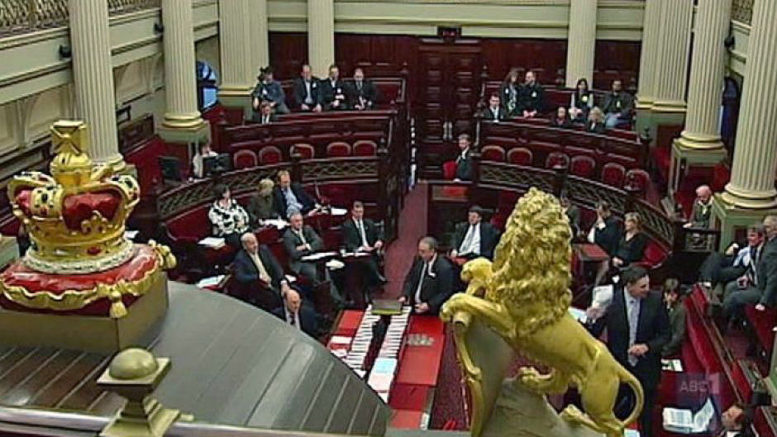Contributed by Glen
Democracy for ordinary people always requires a struggle. Any sort of democratic gains working people make are always resisted by our leaders.
In the Australian setting from the 1850’s onward Victoria, was in many ways the leading state in winning democratic reforms.
Victoria broke away from New South Wales in July 1851. This was a tumultuous period, with the political upheavals on the gold fields, as well as the 8-hour day showing the tone of the period.
One area that was slow to democratise, was the upper house of parliament, the Victorian Legislative Council.
This was the first ‘representative’ chamber in the Victorian parliament, established in 1851. Only those who had freehold valued at 100 pounds, or paid rent of 10 pounds per year were eligible to stand. Those on the Legislative Council weren’t paid.
Despite the limitations, it introduced important reforms, such as the drafting of the original Constitution of Victoria, ordering the construction of the Victorian Parliament House, as well as bringing in the secret ballot for voting: a world first.
Over the years, it evolved into a veritable refuge for the squattocracy, wealthy men of the land, who acted as representatives of their class.
When the other house of parliament, the Legislative Assembly, proposed progressive legislation, it wasn’t unusual for the Legislative Council to act as a bulwark against democratic reform. This included blocking legislation like the abolition of plural voting, better working conditions under the Factories Act, and the voting right for women.
It wasn’t unusual for the Legislative Council to block supply.
Change was slow. Over time, more Victorians became eligible to vote. From 1857 men could vote for Assembly. Women eventually following in 1908.
While the Legislative Assembly introduced preferential voting in 1911, the Legislative Council didn’t follow until a decade later and it was not until 1935 that compulsory and absentee voting came.
Finally, in 1950 the Council removed property qualifications for voters. This took place long after the Russian revolution, following two World Wars, the invention of the plane, and the production of the moving film. Things that would never have been thought of when the Legislative Council was first established.
Further changes have been made in the Legislative Council making it more representative, with it now having a range of parties truly representing Victorian voters.
Though the case here may seem extreme, it reflects the fact that democracy for working people is never conceded easily by our rulers.
Sure, we’ve come a long way, but the gains have still been limited and there is still a long way to go. To make democracy that is truly representative, we’ve got to continue fighting for change. We have a world to win.


Be the first to comment on "The birth of Victoria’s Legislative Council"